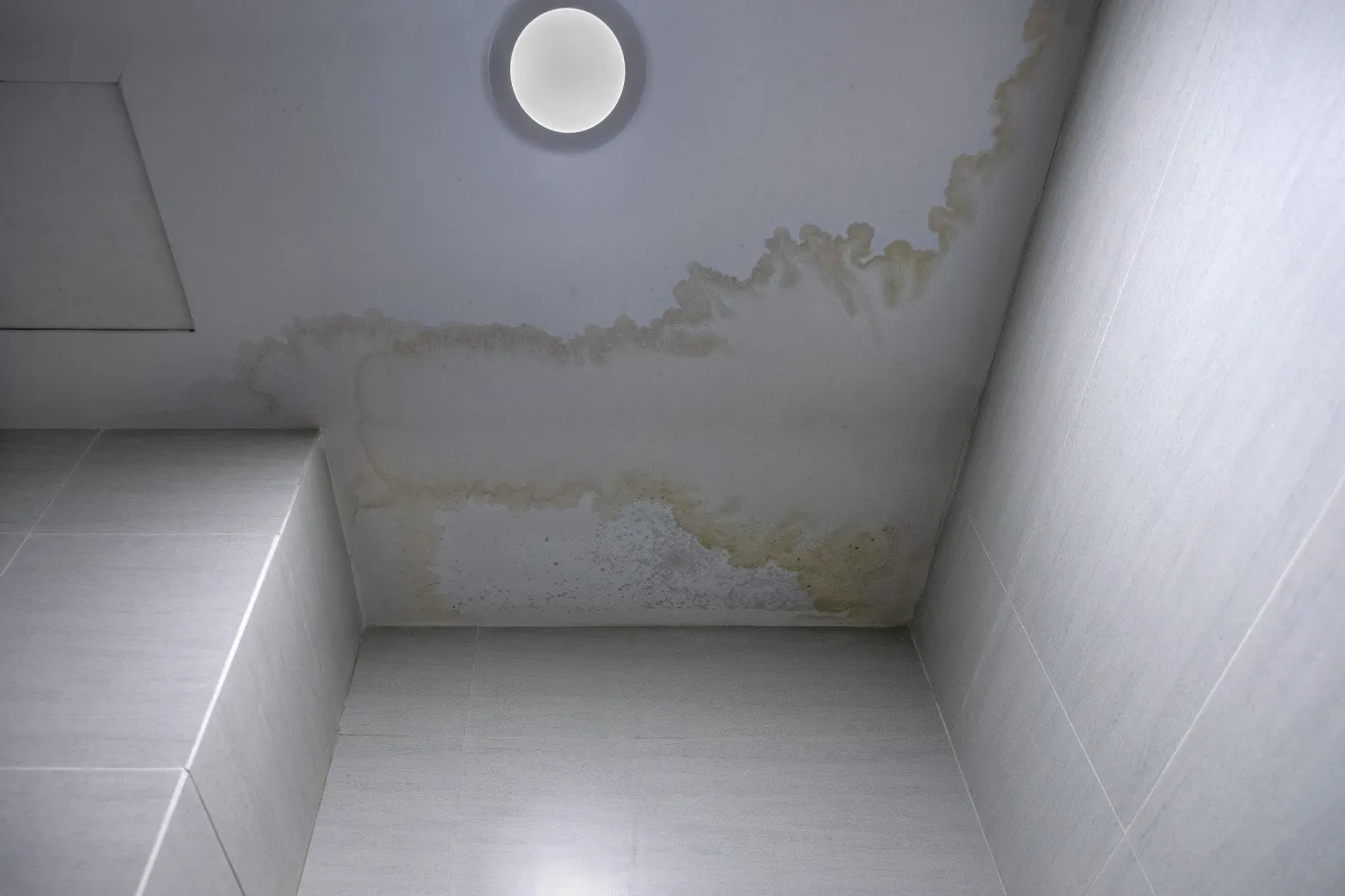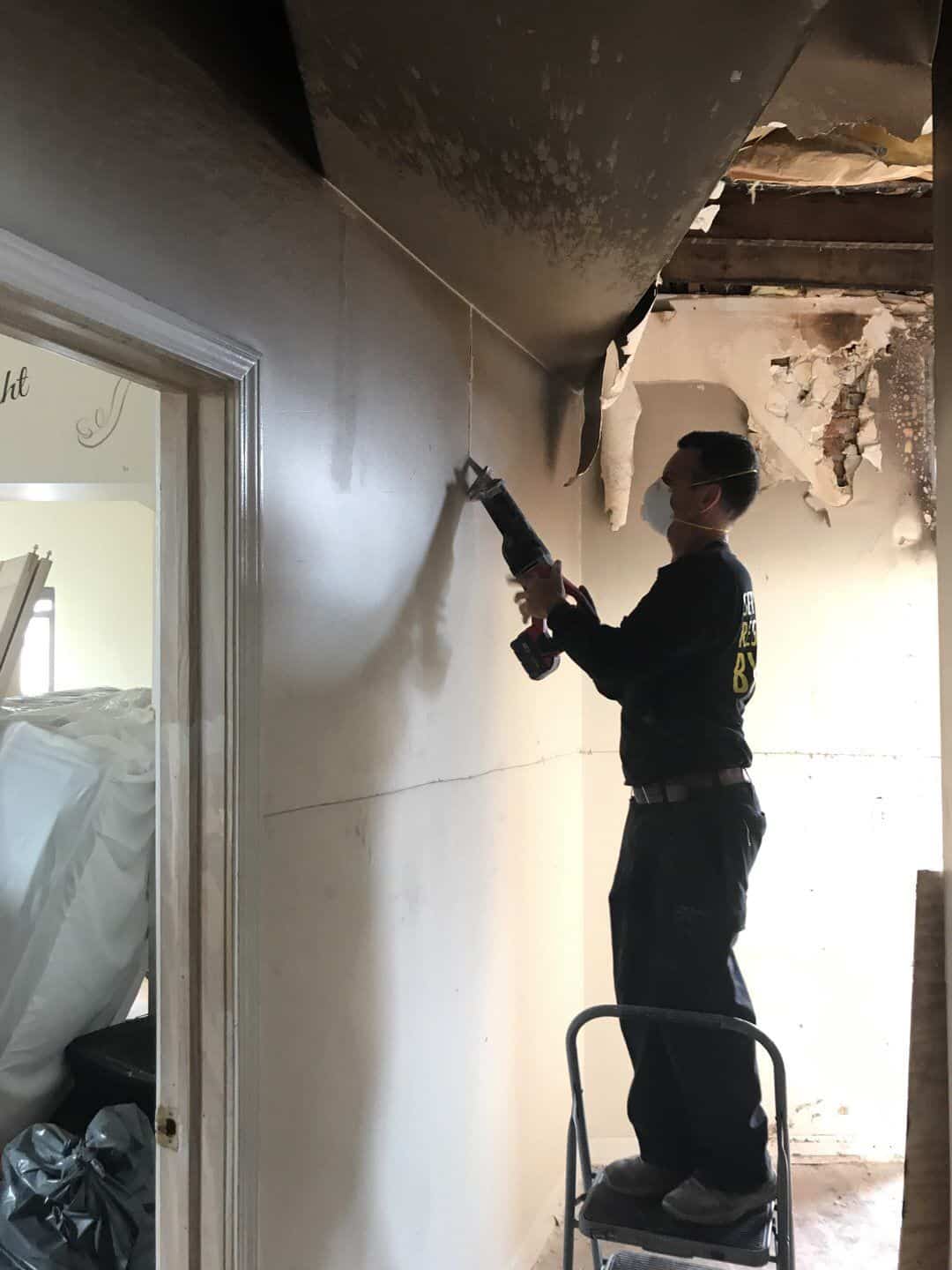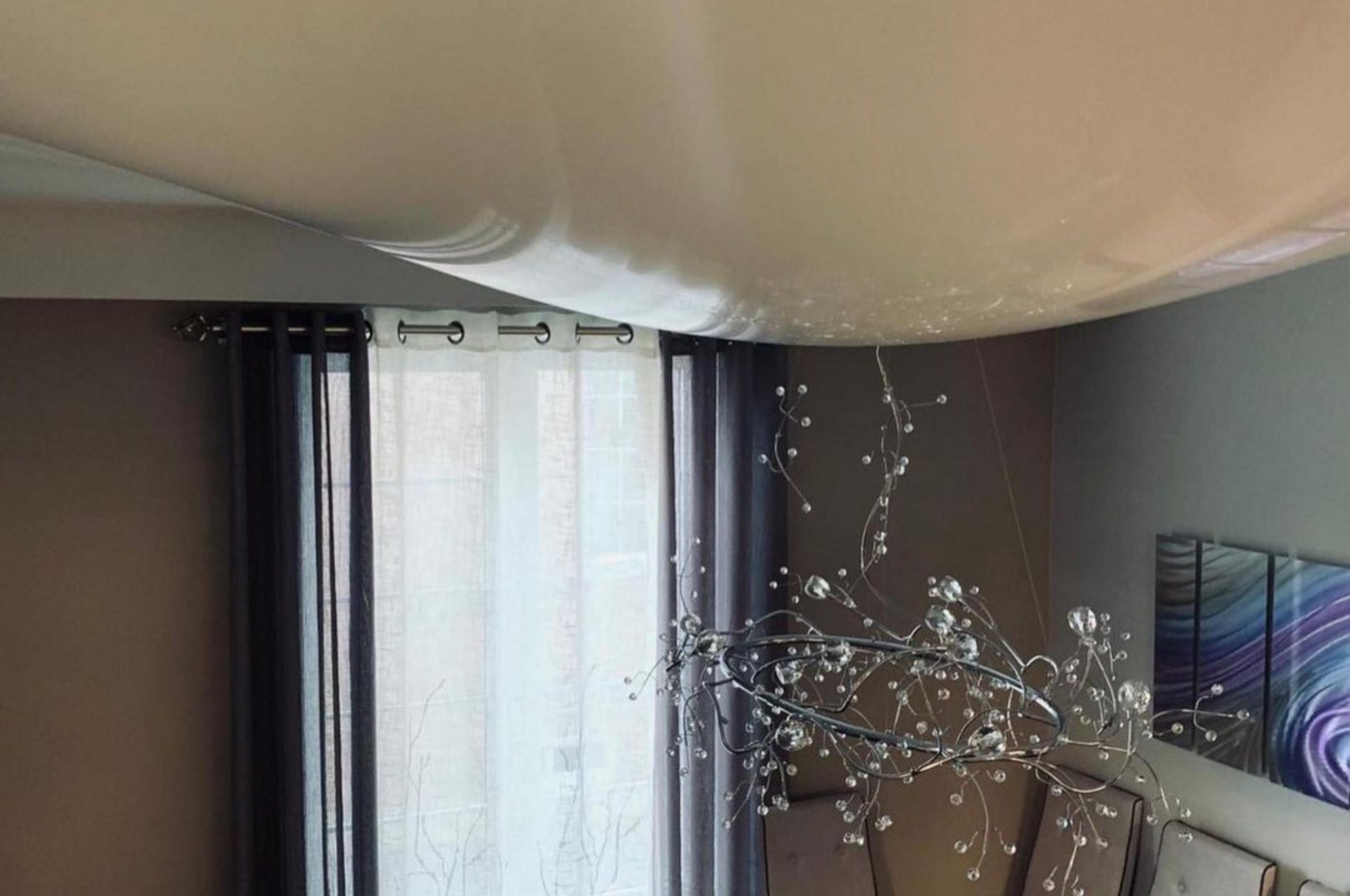
What Causes Ceiling Water Damage?
Before diving into the repair process, it’s important to understand the common causes of ceiling water damage. Some of the most frequent culprits include:
1. Roof Leaks
One of the most common causes of ceiling water damage is a leaking roof. When your roof’s shingles or flashing are damaged, rainwater can seep through and collect on your ceiling, eventually causing water stains, sagging, or mold growth.
2. Plumbing Leaks
Water pipes running through your ceiling can burst, leak, or develop condensation, leading to water damage. Bathrooms or kitchens located on upper floors are particularly vulnerable, as leaks from these areas can cause water to seep into ceilings below.
3. Condensation
In humid environments or homes with poor ventilation, condensation can form in attics or ceilings, especially around air conditioning ducts or windows. This moisture buildup can weaken your ceiling and lead to mold growth over time.
4. Burst Pipes
Freezing temperatures can cause pipes to burst, flooding the ceiling and leading to water damage. If this occurs in areas like attics, the water can trickle down and cause widespread damage to the ceiling below.
If you’re unsure about the cause of your ceiling water damage, it’s essential to identify the source of the leak before attempting repairs. Citywide Mold Mitigation offers professional water damage assessments and repair services to help you locate and fix the problem.
Tools and Materials You’ll Need to Repair a Water-Damaged Ceiling

Before getting started on your ceiling repair, gather the following tools and materials:
- Drop cloths or plastic sheeting to protect floors and furniture
- Utility knife or drywall saw
- Replacement drywall (if necessary)
- Joint compound
- Drywall tape
- Sandpaper or sanding block
- Primer and paint (to match your existing ceiling)
- Paint roller and brushes
- Ladder
- Protective gloves and mask
Once you have your tools and materials ready, follow these steps to repair the ceiling and restore its appearance.
How to Repair a Ceiling From Water Damage: Step-by-Step Guide

Repairing a water-damaged ceiling can seem like a daunting task, but by following these steps, you can restore your ceiling to its former condition:
| Step | Description |
|---|---|
| 1. Address the Source of Water Damage | Before repairing the ceiling, it’s essential to fix the source of the water damage. Whether it’s a leaky roof, burst pipe, or plumbing issue, stopping the leak will prevent future water damage. Consider hiring a professional to address serious leaks or plumbing problems before starting any repairs. |
| 2. Dry Out the Affected Area | Once the leak is fixed, allow the ceiling to dry completely. Use fans, dehumidifiers, and open windows to help speed up the drying process. It’s important to ensure that all moisture is gone before moving on to the next steps to prevent mold growth. |
| 3. Remove Damaged Materials | If the ceiling is sagging, cracked, or has significant damage, you’ll need to remove the damaged drywall. Use a utility knife or drywall saw to cut out the damaged section. Be sure to wear protective gloves and a mask during this process to avoid inhaling dust or mold spores. |
| 4. Replace the Drywall (If Necessary) | For severely damaged areas, you’ll need to replace the drywall. Cut a new piece of drywall to fit the hole and secure it with screws or nails. Use joint compound and drywall tape to seal the seams and ensure a smooth surface. Let the joint compound dry completely before sanding. |
| 5. Sand and Smooth the Area | Once the joint compound is dry, use sandpaper or a sanding block to smooth out the area. Sand until the surface is level with the surrounding ceiling. Be sure to wipe away any dust with a damp cloth before moving on to the next step. |
| 6. Prime and Paint the Ceiling | After sanding, apply a coat of primer to the repaired area. This will help the paint adhere and prevent water stains from showing through. Once the primer is dry, paint the ceiling to match the existing color. Use a roller for larger areas and a brush for corners and edges. |
Following these steps should help you repair the ceiling and restore its appearance. However, if the damage is extensive, or if you’re dealing with mold growth, it’s best to call in professionals to ensure a thorough repair. Citywide Mold Mitigation offers expert ceiling repair, water damage restoration, and mold removal services to help homeowners in Arlington, TX, and surrounding areas.
When to Call a Professional for Ceiling Water Damage Repair

While minor ceiling water damage can be repaired with DIY methods, some situations require professional intervention. Here are some signs that it’s time to call a professional for ceiling repair:
- Extensive water damage: If a large portion of your ceiling is damaged, or if the water has soaked through multiple layers of drywall, it’s best to call a professional.
- Mold growth: If you notice mold on your ceiling or suspect hidden mold, it’s crucial to hire a mold remediation expert to remove the mold safely and prevent health risks.
- Persistent leaks: If you’ve attempted to fix the source of the water damage but the leak persists, call a plumber or roofing contractor to address the problem.
- Structural damage: If the water damage has caused your ceiling to sag or collapse, this indicates a structural issue that requires immediate attention from a professional.
If you’re dealing with significant water damage or mold in your ceiling, Citywide Mold Mitigation can help. Our team of experts specializes in water damage repair, mold remediation, and restoration services to protect your home and restore your ceiling.
How to Prevent Future Ceiling Water Damage
Once you’ve repaired your ceiling, it’s important to take steps to prevent future water damage. Here are some tips to help keep your home safe from leaks and moisture:
1. Regularly Inspect Your Roof
Your roof is your home’s first line of defense against water damage. Check for missing or damaged shingles, cracks in flashing, and other signs of wear and tear. Regular roof maintenance can help prevent leaks that lead to ceiling water damage.
2. Fix Plumbing Leaks Immediately
If you notice any signs of a plumbing leak, such as water stains or dripping, address the issue right away. Even small leaks can cause significant water damage over time if left untreated.
3. Improve Ventilation
Proper ventilation is essential for preventing condensation and moisture buildup. Make sure your attic and bathroom vents are functioning properly and consider using dehumidifiers in humid areas of your home.
4. Insulate Water Pipes
During cold weather, exposed water pipes are at risk of freezing and bursting. Insulate pipes in areas like attics, basements, and crawl spaces to prevent freezing and water damage.
For more detailed advice on how to prevent water damage in your home, check out this guide from Family Handyman.
FAQ
| Question | Answer |
|---|---|
| How much does it cost to repair a water-damaged ceiling? | The cost of repairing a water-damaged ceiling varies depending on the extent of the damage. Minor repairs may cost between $200 and $500, while extensive repairs can range from $1,000 to $3,000 or more. |
| Can I repair a water-damaged ceiling myself? | Yes, you can repair minor ceiling water damage yourself by following the steps outlined in this guide. However, if the damage is extensive or if mold is present, it’s best to hire a professional for proper remediation and repair. |
| What causes water damage on the ceiling? | Common causes of ceiling water damage include roof leaks, plumbing leaks, condensation, and burst pipes. It’s important to fix the source of the leak before attempting ceiling repairs to prevent further damage. |
| How can I prevent mold after ceiling water damage? | To prevent mold growth after ceiling water damage, ensure the affected area is thoroughly dried and cleaned. If you notice mold growth, contact a professional mold remediation service like Citywide Mold Mitigation for safe removal. |
| When should I call a professional for ceiling repair? | If you’re dealing with extensive damage, mold, or structural issues, it’s best to call a professional for ceiling repair and water damage restoration. |
If you’re facing water damage in your ceiling, reach out to Citywide Mold Mitigation for expert water damage restoration and mold remediation services today.

